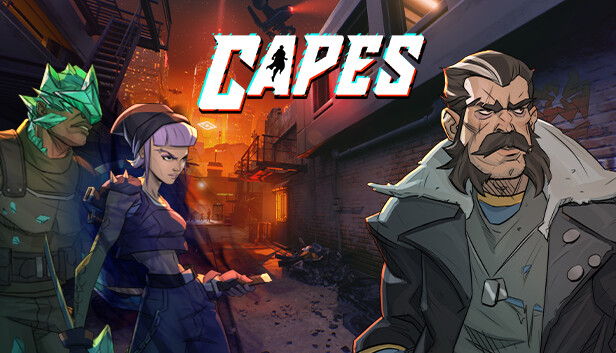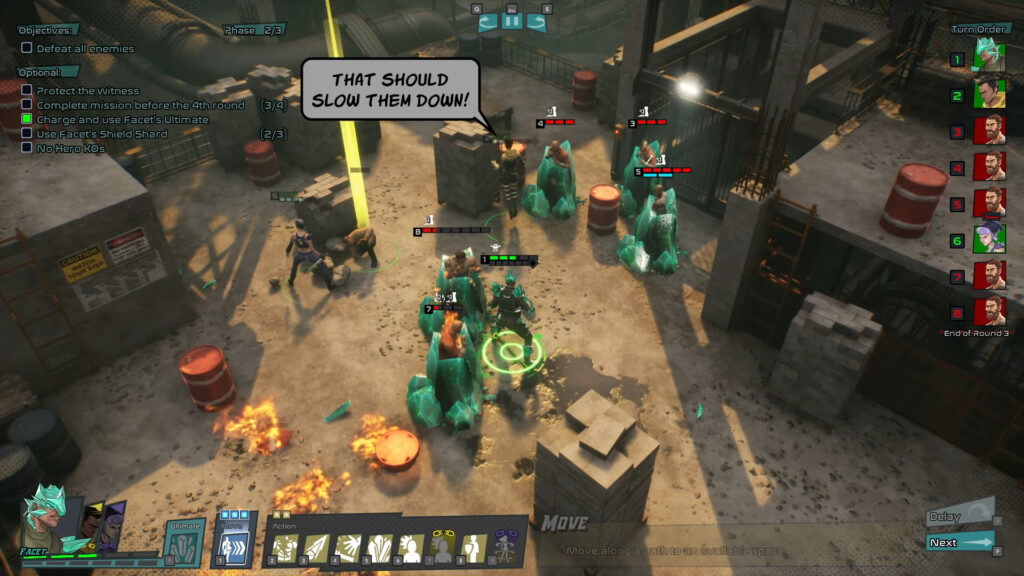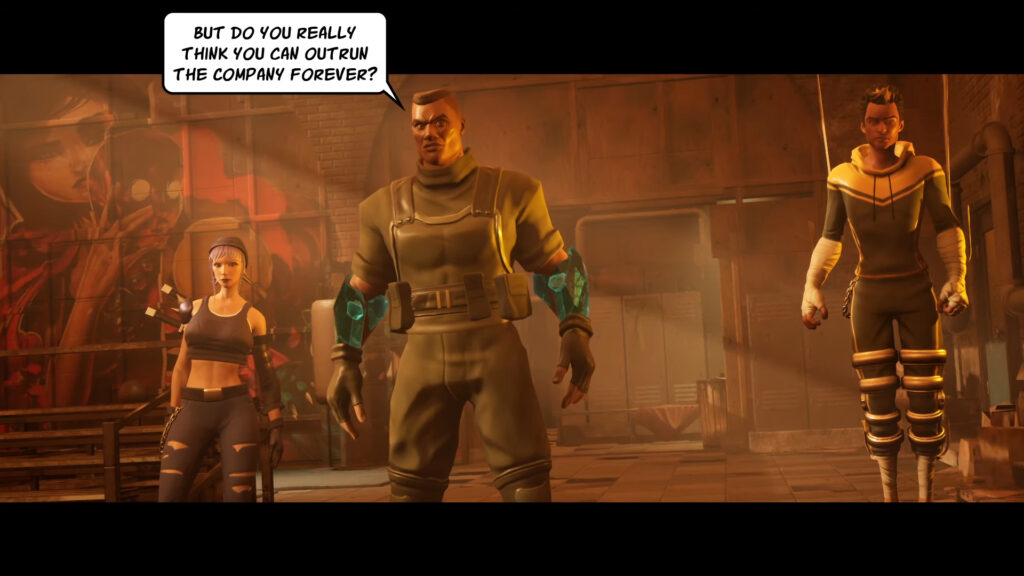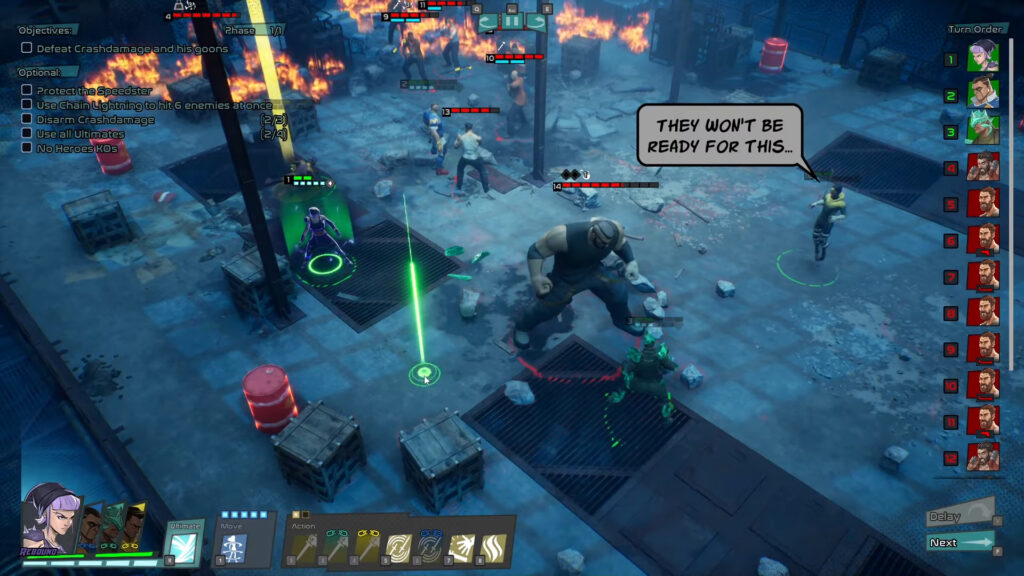
Developer: Spitfire Entertainment
Publisher: Daedalic Entertainment
Platform: PC, PS5, PS4, Switch, Xbox One, Xbox Series X|S
Tested on: PC
Capes – Review
Turn-based strategy titles typically take place in a fantasy setting a la Fire Emblem or Disgaea or a sci-fi setting like XCOM. By contrast, Spitfire Entertainment’s Capes already stands out from its competitors in the genre, by presenting us with a superhero setting instead. Admittedly, the heroes in Capes aren’t the familiar faces of Batman, Spider-Man, or even Homelander, but a bunch of original characters instead. Ironically, none of the characters featured in the game actually wears a cape -but let’s not let that get in the way of our review, shall we?
Story
We’ve all grown up with comic books, movies, and TV shows about superheroes. It’s general knowledge that the good guys beat the bad guys. What if the supervillains won, however? It’s a question that’s not asked very often, but it’s also one that Capes tries to answer. Our story is set in a society where supervillains, under the guise of The Company, have been in power for decades in King City. It’s a bleak, dystopian place where anyone who shows the tiniest sign of having some kind of superpower is quickly arrested, never to be seen again. The forces of good aren’t completely thwarted, however: hidden from the eyes of their rulers, a resistance cell has been formed by escaped superhumans. These brave heroes now fight back against The Company, intending to overthrow the rule of supervillainy. Will they succeed and return freedom to society?
Graphics
For a game that takes inspiration from comic books, Capes is lacking in visual identity. There is something to be said about the hand-drawn key art, but the in-game character models look a bit too much like plastic for our liking, with stiff, janky animations. It doesn’t help that the game’s characters all look like what you’d expect modern-day generic, non-licensed superheroes to look like. It would have helped if Capes had leaned more into the aesthetics of the Golden Age of comics, rather than having its main cast look like they were rejects from Cyberpunk 2077 cosplaying as X-Men. Capes also doesn’t maintain visual consistency in the way the story is presented: some dialogue scenes are shown with comic book art, whereas at other times you’re getting those lackluster in-game models instead. The game also misses an opportunity by not adding cosmetic items or other ways to customize your team to your liking, allowing you to make your heroes wear uniforms, for example.
Sound
What Capes lacks in visual flair, it does make up for in terms of audio somewhat. The voice acting is the stand-out element here, with a cast that does their best to make the dialogue sound believable. The game’s music doesn’t quite rank up there with the Avengers soundtrack, but what’s present here wouldn’t feel out of place in a modern superhero drama show a la The Flash. The sound effects fare worse, unfortunately, often lacking the necessary oomph befitting the impact of superhero attacks.
Gameplay
The basic idea behind Capes can be explained in three words: XCOM with superheroes. You assemble your own squad and use their powers to claim victory in turn-based battles that tie into an overarching narrative campaign. In between the battles, you return to your base, which acts as the game’s hub area, where you can revisit previously cleared missions and fine-tune your heroes’ abilities. As you play through the story, you’ll eventually have access to a roster of eight heroes, and you’ll typically select up to four of them before taking on a mission. Each playable character feels distinct and offers something unique, whether it’s the rock-hard armor of Facet or Rebound’s powers of teleportation. The key to victory often lies in either stringing the powers of heroes together or by taking highly specialized characters that are particularly suited for the task at hand. Mercurial, for example, is a Flash expy that comes in super handy when facing a strict time limit. Character selection becomes important when your choices completely dictate how you tackle a mission. Regardless of your choice, there’s always a way to win, although some heroes are better suited to certain missions than others, of course.
Things are made even more interesting by the so-called Team Ups. Certain hero abilities have synergy with those of other heroes, allowing you to unlock complimentary bonus effects. Rebound, for example, does more damage when backstabbing an enemy. By teaming her up with the psychic hero Mindfire, you can use his mind control to ensure those enemies are always facing away from Rebound, allowing her to maximize her damage output. It’s a well-executed approach that rewards players for actually strategizing, rather than going in guns blazing, and that’s not even the end of how layered Capes’ tactical gameplay is. By meeting specific criteria, you’ll charge up your Ultimate energy too. Each hero has their own way of charging: Facet’s Ultimate energy builds up by tanking hits, for example. Once you have gathered enough Ultimate energy, you’ll then be able to unleash your Ultimate attack, showcasing the extent of each hero’s power.
There is plenty of mission variety here, from stealth missions to horde battles and focused boss battles. Each completed mission can be replayed to achieve any bonus objectives you may have missed the first time around. This also allows you to try out other team combinations of course, as well as grind for precious experience for your team of supers. The missions are highly replayable too, with the game avoiding a feeling of repetitiveness thanks to mission variety and different ways to tackle everything. Playing through the campaign should take most players around 25 hours, which is a bit on the steep side when factoring in the €39.99 asking price, and the game doesn’t really bring anything new to the table for the turn-based strategy genre. The core turn-based strategy definitely is good, simply because of the sheer amount of ways to tackle (and re-tackle) what’s present here. The game still feels low on content, however, even if you can revisit it at higher difficulty levels. We wouldn’t go in expecting a full-on PVP mode, but things like challenge maps or even some customizable content to personalize your team would have definitely gone a long way here.
Conclusion
We can’t say that we didn’t enjoy our time with Capes, but it’s also difficult to deny that the game doesn’t live up to its true potential. The combat is nuanced and layered, but the overall appeal of the game is held back by underwhelming visual presentation and a severe lack of content beyond the narrative campaign. Granted, the campaign will keep you occupied for quite some time, and Capes is fun while it lasts, but once the credits roll, there’s nothing here to really incentivize you to return to it, nor to make you hope for a sequel









No Comments